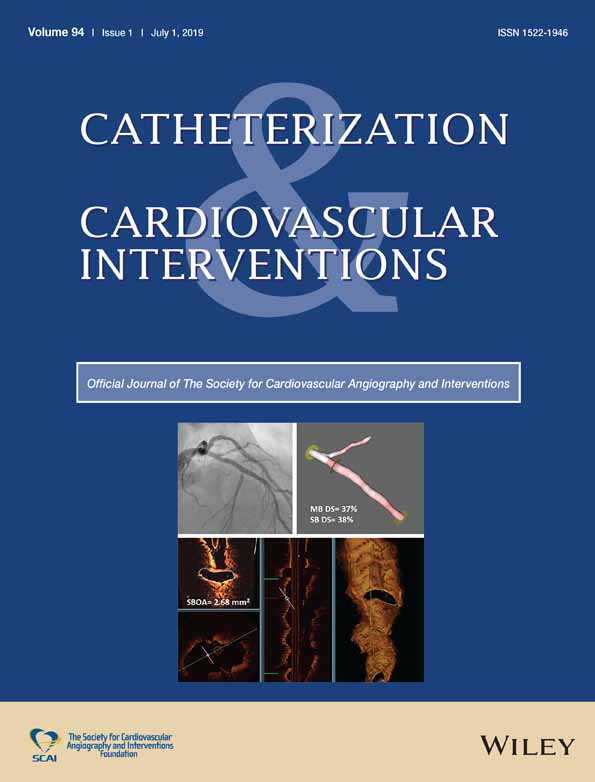Drug-coated balloon versus plain old balloon angioplasty in femoropopliteal disease: An updated meta-analysis of randomized controlled trials
Abstract
Background
Drug-coated balloon (DCB) angioplasty has emerged as a mainstay of therapy for the treatment of peripheral arterial disease (PAD) involving the superficial femoral and popliteal arteries. We performed a meta-analysis including all available randomized controlled trials (RCTs) to date which compare DCB to plain balloon angioplasty (POBA) in femoropopliteal disease (FPD).
Methods
Five databases were analyzed including EMBASE, PubMed, Cochrane, Scopus, and Web-of-Science from January 2000 to September 2018 for RCTs comparing DCB to POBA in patients with FPD. Heterogeneity was determined using Cochrane's Q-statistics. Random effects model was used.
Results
Twenty-two RCTs, including five trials of in-stent restenosis (ISR) intervention, with 3,217 patients were included in the analysis. Mean follow-up was approximately 21.6 ± 14.4 months. Overall, DCB use was associated with a 51% reduction in target vessel revascularization (TLR) when compared to POBA at follow-up (relative risk [RR]: 0.49, 95% confidence interval [CI]: 0.40–0.61, P < 0.0001). Rates of TLR were 45% lower in the DCB group when compared to POBA in patients with ISR (RR: 0.55, 95% CI: 0.37–0.81, P = 0.002). DCB was associated with lower rates of binary stenosis, late lumen loss and higher primary safety endpoints. Major amputation and mortality were not different between DCB and POBA.
Conclusions
Use of DCBs is associated with improved vessel patency and a lower risk of TLR when compared to POBA in patients with FPD, especially in the setting of ISR. There was no difference in mortality between DCB and POBA in our meta-analysis. Extended follow-up of the available RCT data will be essential to analyze long-term device-related mortality.
CONFLICT OF INTERESTS
Dr Carlos Mena is a consultant for Cook. Dr Garcia is a consultant for Surmodics, Osprey medical, Medtronic, Edwards Lifesciences, Abbott and Boston Scientific. Dr Garcia has research grants from Research grants from Edwards Life Sciences, Minnesota Veterans Research Foundation, and VA Office of Research and Development. Dr Regan is a consultant for Medtronic.




